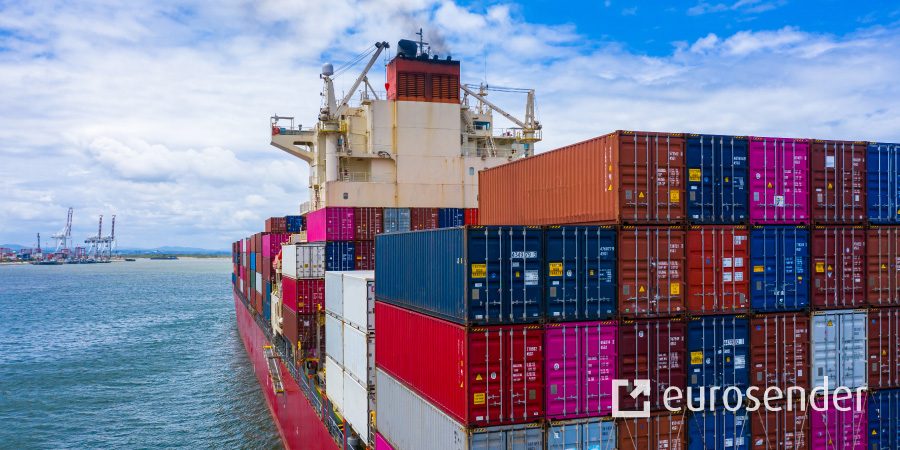Proof of ownership in cargo shipping
When shipping cargo by sea, the process to prove parcel ownership can be a bit more complicated than signing the proof of delivery when a courier brings a box or package to your door. In general terms, and because international cargo shipping often involves larger or more expensive parcel, there are a series of specific steps one need to fulfill to properly receive a shipment. The most important proof of ownership in cargo shipping is the bill of lading.
You may also want to read about:
- Bill of Lading – Logistics glossary
- What is Original Bill of Lading?
- What is an Express Bill of Lading?
Bill of lading (B/L): what does it mean?
The bill of lading is one of the most important documents when shipping overseas and the key to prove ownership when shipping cargo. It is a record of the goods loaded for transportation. The B/L includes the names of the consignee, the carrier and the shipper, as well as the type of shipment and the type of goods being transported. Who is the consignee in the bill of lading? Simply put, the person the cargo is shipped to. When is the lading issued? The carrier (transporting company) issues the document to the shipper, creating an agreement between the two of them.
The bill of lading for cargo shipping or freight transport serves multiple purposes, that can be summarised as follows:
- Receipt of cargo: the main purpose of the B/L is to act as a receipt between the shipper and the carrier.
- Document of title: the ownership of the goods can be transferred from one carrier to another until delivery. When the shipment gets to the destination, the person the B/L has been endorsed to is the one that can receive the cargo.
- Evidence of the contract of carriage: another purpose of the bill of lading is to establish the agreement between the carrier and the shipper. In addition, to prove ownership, the bill of lading in cargo shipping works as a contract in which the duties and responsibilities of both parties are disclosed.
You may also be interested in:
The most common and more modern type of bill of lading is the order bill of lading. This type of document ensures the safety of cargo because it will only be handed over to the holder of the B/L. To make sure the person receiving the shipment, who is the consignee in the bill of lading, is the rightful holder, the B/L will be verified by an agent.
You may also be interested in reading about the following incoterms:
- EXW- Ex Works
- FCA – Free Carrier
- CPT – Carriage Paid To
- CIP – Carriage Insurance Paid
- DPU – Delivery Place Unload
- DAP – Delivered at Place
- DDP – Delivered Duty Paid
- FAS – Free Alongside Ship
- FOB – Free On Board
- CFR – Cost and Freight
- CIF – Cost Insurance and Freight
Bill of lading advantages and disadvantages
Many choose to issue a bill of lading because of the standardised use of the document and the fact that it can be electronic, which reduced paper costs. However, shippers will have to consider the advantages and disadvantages of the bill of lading before organising freight transport services:
Advantages:
- Is the most modern type of bill and most carriers and shipping companies are familiar with this document.
- Is widely used around the globe and makes the process of international shipping easier.
- Because the endorser of the bill can be changed, the cargo is easier to transport even when there are many stops.
- Some shipping companies offer services to track the B/L.
- There is the possibility of issuing an electronic bill of lading when shipping cargo, which reduces paper costs.
Disadvantages
- Because there can be many stops and security procedures are not standardised, the cargo can be collected by someone with a fraudulent B/L.
- There are only a few companies that offer unified tracking services to localise your cargo through the B/L.
Bill of lading vs proof of delivery
What is the main difference between B/L and proof of delivery? It is usually not a matter of bill of lading vs proof of delivery, but a matter of having both issued correctly and understanding their differences.
- The proof of delivery is simply a confirmation that the goods are present and accounted for, and that they have arrived without visible damage. The recipient of the shipment is the one who signs this form. Later, the carrier sends a copy of this document to the shipper.
- Although they have similar objectives, the POD is to be signed to confirm the cargo arrived and that it arrived safely. However, proof of delivery does not mean proof of ownership when shipping cargo. Only the B/L or a similar legal document is considered as proof.
Check more about:
Do you want to ship cargo internationally? Check what Eurosender can do for you!
We hope this article can help you to navigate the world of logistics, especially if you are interested in shipping in bulk or want to transport goods internationally. if you are not sure of how and when is the lading issued or have any more questions about what does bill of lading for cargo shipping means or how to give proof of ownership in cargo shipping, please contact us and our agents will try to help you in whatever they can!
For more information about pallet and cargo shipping, check all our freight-related articles.
